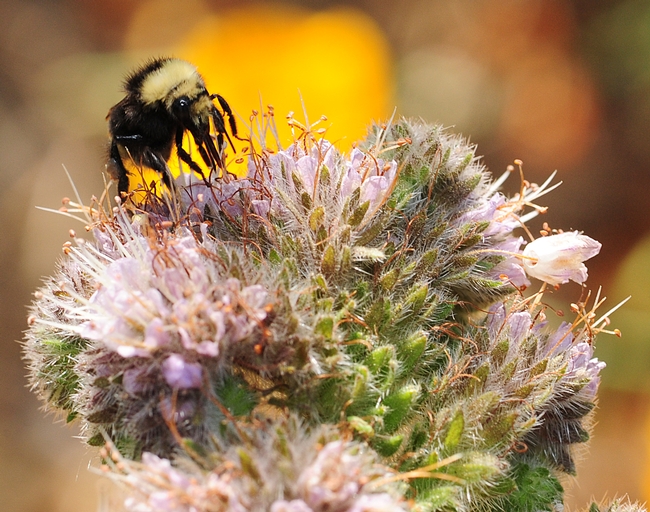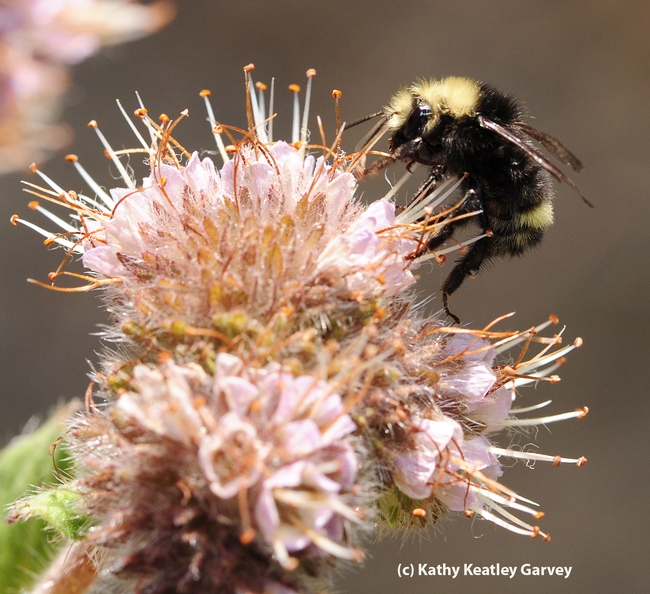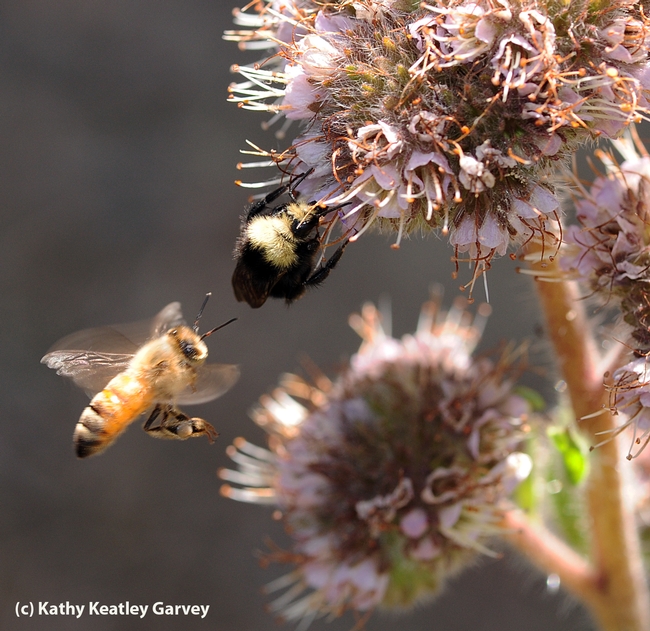The first thing you notice when you walk up to the Harry H. Laidlaw Jr. Honey Bee Research Facility on Bee Biology Road, UC Davis, are the natives.
Native plants, that is.
California golden poppies and phacelia are among the plants sharing the "Pollination Habitat" bed. The golden poppies literally light up the landscape. The phacelia, not so much.
The next thing you notice are the bumble bees, carpenter bees, honey bees and syrphid flies foraging on the natives. An occasional butterfly flits by.
Today a bumble bee, Bombus vandykei, buzzed from one phacelia to another. She was interested only in phacelia. Nothing else, thank you.
She quickly found herself competing with honey bees for the nectar and pollen.
A sign, "Pollinator Habitat," tells the story:
"This area has been placed with a range of flowering native plants to provide hgh waulity habitat for native bees and other pollinators. To learn how you can create good habitat for pollinators please visit www.xerces.org."
Phacelia is one of the bee plants recommended in G. H.Vansell's booklet, Nectar and Pollen Plants of California (Bulletin 517). Extension apiculturist Eric Mussen of the UC Davis Department of Entomology, mentions phacelia in his list of good bee plants in a 2002 edition of his newsletter, from the UC apiaries.
And phacelia is also a plant that pollination ecologist Neal Williams, assistant professor of entomology at UC Davis, is studying.
Attached Images:


